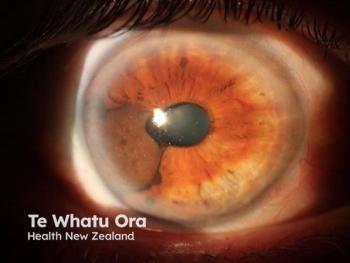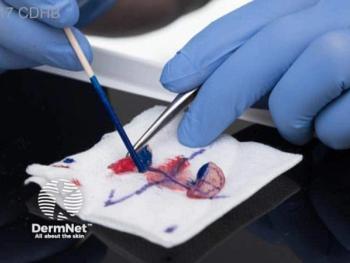
What’s Ahead for Melanoma Management
Immunotherapy, intralesional treatments, multidisciplinary care teams define rapidly-evolving multimodal approach.
Key directions for melanoma treatments under development include treating tumors in the perioperative period and addressing unresectable tumors, according to a review published in Oral and Maxillofacial Surgery Clinics of North America.1 This rapidly evolving environment will require physicians to monitor evolving care standards and embrace multidisciplinary teamwork, authors added.
“Even though we’ve had profound success in terms of melanomas treatment in the last 10 years, we’ve also seen a cemetery of failed ideas and failed treatments, most of which involve the immune system,” corresponding author James R. Nitzkorski, MD, told Dermatology Times®. He is a surgical oncologist and director of the surgical residency training program at Nuvance Health, Vassar Brothers Medical Center, in Poughkeepsie, New York.
Perhaps the most promising avenue for future melanoma treatments, he said, involves patients who have undergone resection of local or regional disease that could be cured with surgery alone. “As a surgeon, my practice is full of patients like this. There is no evidence of disease. They are in remission. But we know that melanoma can be unpredictable, and some of these patients will end up developing recurrence. Is there anything better than we are doing right now in terms of improving their survival?”
In that regard, an important shift toward administering immunotherapy to higher-risk stage II patients has occurred in recent years. For example, the Keynote-716 phase 3 trial showed that adjuvant pembrolizumab (Keytruda; Merck) for up to one year significantly reduced the risk of disease recurrence or death versus placebo in patients with stage IIB or IIC melanoma.2
The following trials have provided encouraging results for neoadjuvant therapy:
- OpACIN-neo (NCT02977052)—In this phase 2 trial, neoadjuvant ipilimumab (Yervoy; Bristol Myers Squibb) plus nivolumab(Opdivo, Bristol Myers Squibb) produced pathologic complete response in 77% of treated patients with stage III melanoma metastatic to lymph nodes. Side effects were tolerable.3
- PRADO—This OpACIN-neo extension suggests that carefully chosen patients with robust responses to preoperative combination therapy may be able to avoid therapeutic lymph node dissection.4
Additionally, small studies have shown the following:
- Preoperative pembrolizumab produced complete or near-complete response in almost 30% of patients with stage III/IV melanoma.5
- Among patients with BRAF-mutated melanoma, 25% treated with neoadjuvant dabrafenib and trametinib achieved significantly longer event-free survival versus standard care (surgery plus consideration of adjuvant therapy).6
When Nitzkorski began his surgical oncology practice, only patients with advanced melanoma were referred for immunotherapy. “Now we’re referring adjuvant patients, and even stage II patients, for immunotherapy. The higher-risk stage II patients—stage IIb and IIc—are now eligible in certain circumstances to receive adjuvant therapy. So we are referring many more patients with melanoma to medical oncology to have this discussion.”
For unresectable melanomas, promising intralesional therapies include the following:
- Talimogene laherparepvec (T-VEC; Imlygic, Amgen)—This attenuated herpes simplex virus (containing the granulocyte macrophage colony-stimulating factor/GM-CSF) has shown efficacy in phase 3 and in combination with ipilimumab.7,8 But a phase 2 trial in combination with pembrolizumab was terminated.9
- Tavokinogene telseplasmid (TAVO, OncoSec)—Anecdotally, Nitzkorski used this treatment under an expanded-access FDA protocol to treat a female with very worrisome advanced melanoma that had spread to multiple lymph nodes and vital organs. “I would estimate that she had weeks to live, and after receiving this treatment, she lived for a year and a half. That’s extraordinary. With just TAVO treatment, all of the regions responded.”
The trend toward multimodal management of melanoma means that patient care is increasingly being provided by multidisciplinary teams. “Melanoma is such a rapidly changing science that unfortunately, what could happen, especially if a surgeon is not routinely caring for melanoma patients, is that the surgeon or physician may have a slightly outdated understanding of the standard of care,” said Nitzkorski. “Because the science is evolving so rapidly, somebody that perhaps was untreatable 5 years ago may have a reasonably good option at this point. So, it is always best for patient care to work in a collaborative environment with other specialists or tumor boards, even if just via phone call.”
Nitzkorski added that in New York’s Hudson Valley, where he practices, surgical oncologists collaborate with local dermatologists to diagnose melanoma. “The surgical oncologist is usually the first person to see patients with melanoma. We’ll work patients up, stage them as necessary, and if necessary, have them be seen by other specialists like medical oncology, genetics, or radiation oncology. We can help facilitate a patient-centered approach to their care.”
The continued pace of melanoma advancements will require physicians to stay on their toes. “Having at least a general understanding of some of the advances that are occurring is going to be necessary for surgeons, dermatologists, and even primary care,” he said. The growing role of gene expression profiling (GEP) provides a timely example.
“At the time of diagnosis,” Nitzkorski explained, “it is now possible to use gene expression profiling with a new melanoma patient to help stratify the risk of developing future metastasis or recurrence. These tests are new, with evolving and maturing data.” As such, he said, if and when to use GEP remains somewhat controversial. “It is starting already. This major push towards more personalized care is already happening.”
Disclosures:
Nitzkorski reports no relevant financial interests.
References:
1. Wells K, Anandarajan V, Nitzkorski J. Future Treatments in Melanoma. Oral Maxillofac Surg Clin North Am. 2022;34(2):325-331. doi:10.1016/j.coms.2021.11.003
2. Luke JJ, Rutkowski P, Queirolo P, et al. Pembrolizumab versus placebo as adjuvant therapy in completely resected stage IIB or IIC melanoma (KEYNOTE-716): a randomised, double-blind, phase 3 trial. Lancet. 2022;399(10336):1718-1729. doi:10.1016/S0140-6736(22)00562-1
3. Rozeman EA, Menzies AM, van Akkooi ACJ, et al. Identification of the optimal combination dosing schedule of neoadjuvant ipilimumab plus nivolumab in macroscopic stage III melanoma (OpACIN-neo): a multicentre, phase 2, randomised, controlled trial. Lancet Oncol. 2019;20(7):948-960. doi:10.1016/S1470-2045(19)30151-2
4. Blank CU, Reijers ILM, Pennington T, et al. First safety and efficacy results of PRADO: a phase II study of personalized response-driven surgery and adjuvant therapy after neoadjuvant ipilimumab (IPI) and nivolumab (NIVO) in resectable stage III melanoma. J Clin Oncol. 38(15 Suppl). Abstract 10002. Published online May 25, 2020. https://ascopubs.org/doi/abs/10.1200/JCO.2020.38.15_suppl.10002
5. Huang AC, Orlowski RJ, Xu X, et al. A single dose of neoadjuvant PD-1 blockade predicts clinical outcomes in resectable melanoma. Nat Med. 2019;25(3):454-461. doi:10.1038/s41591-019-0357-y
6. Amaria RN, Prieto PA, Tetzlaff MT, et al. Neoadjuvant plus adjuvant dabrafenib and trametinib versus standard of care in patients with high-risk, surgically resectable melanoma: a single-centre, open-label, randomised, phase 2 trial. Lancet Oncol. 2018;19(2):181-193. doi:10.1016/S1470-2045(18)30015-9
7. Andtbacka RHI, Collichio F, Harrington KJ, et al. Final analyses of OPTiM: a randomized phase III trial of talimogene laherparepvec versus granulocyte-macrophage colony-stimulating factor in unresectable stage III-IV melanoma. J Immunother Cancer. 2019;7(1):145. Published 2019 Jun 6. doi:10.1186/s40425-019-0623-z
8. Puzanov I, Milhem MM, Minor D, et al. Talimogene laherparepvec in combination with ipilimumab in previously untreated, unresectable stage IIIB-IV melanoma J Clin Oncol. 2016;34(22):2619-2626. doi:10.1200/JCO.2016.67.1529
9. Amgen. Pembrolizumab with or without talimogene laherparepvec or talimogene laherparepvec placebo in unresected melanoma (KEYNOTE-034). ClinicalTrials.gov identifier: NCT02263508. Updated December 2, 2021. Accessed May 12, 2022. https://clinicaltrials.gov/ct2/show/NCT02263508
Newsletter
Like what you’re reading? Subscribe to Dermatology Times for weekly updates on therapies, innovations, and real-world practice tips.

















